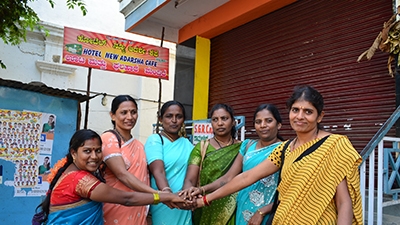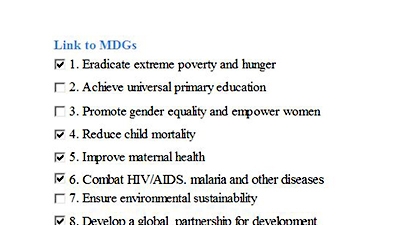CHALLENGE
Most of the world’s 34 million people living with HIV/AIDS are in developing countries. Worldwide, 2.5 million people became newly-infected with HIV, and 1.5 million died of HIV-related causes in 2011—24 percent fewer deaths than in 2005. Sub-Saharan Africa accounted for 68 percent of all new infections and nearly half of all deaths globally in 2010 occurred in Southern Africa. Even where the overall HIV prevalence is low, AIDS can be a severe burden: It is the leading cause of premature death in Thailand and China. More than 8 million people living with HIV are accessing treatment globally; 7 million who need it do not have it. Moreover, for every one person on treatment, two are infected. Without effective HIV prevention, the numbers requiring treatment will become unsustainable.
Despite the global increase in funding during the past decade—from US$1.6 billion in 2001 to US$16.8 billion in 2011—financing gaps persist, and available funds are mainly for treatment. As new infections rise, country and donor investments in prevention are not being sustained. Nearly 90 percent of AIDS spending is from international sources, and the bulk of funding is jeopardized by tight donor and government budgets, household income losses, and worsened food security.
SOLUTION
The Bank’s approach has evolved with the changing HIV/AIDS landscape. When possible, the Bank participates in the pooling of funds, as part of the joint United Nations Programme on HIV/AIDS (UNAIDS) family and other partners, to ensure more effective and efficient responses in regions and countries, consistent with the UNAIDS vision of zero new infections, zero AIDS-related deaths, and zero discrimination. The Bank responds to country needs within the context of Country Partnership/Assistance Strategies, which take account of support from other partners and the governments’ funding for effective prevention of new HIV infections, care, and treatment. The Bank provides sustained funding for HIV/AIDS programs and supports countries to do “better for less” through improved efficiency, effectiveness, and sustainability of national AIDS responses.
The Bank specifically supports analytical work in six related areas: (i) increasing the efficiency of aid allocations; (ii) program and technical efficiency; (iii) effectiveness studies; (iv) financing and sustainability studies; (v) national strategic planning; and (vi) financing through grants and loans. The Bank also engages in key sectors, such as education, transport, energy, and infrastructure, to bridge gaps in HIV prevention, care and treatment, and mitigation. The Bank supports countries through its knowledge and financing for health systems strengthening; total Bank financing for health (including HIV, malaria, tuberculosis, and other diseases) was US$3 billion in FY11 and totaled US$24 billion since 2000.

